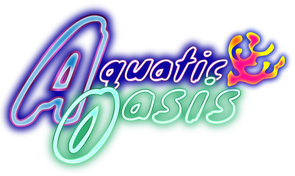Peppermint Shrimp - Lysmata wurdemanni
Not applicable with Auction Items
Beautiful Peppermint Shrimp (Lysmata wurdemanni) - Live Marine Cleaner Invertebrate
The Peppermint Shrimp (Lysmata wurdemanni) is one of the most beneficial marine invertebrates for reef aquariums, featuring distinctive red and white striping and providing exceptional pest control by eating nuisance aiptasia anemones.
Peppermint Shrimp Features:
- Aiptasia Control: Naturally eats nuisance aiptasia anemones, solving common reef tank problems
- Distinctive Appearance: Beautiful red and white striped pattern with translucent body
- Peaceful Nature: Completely reef-safe and compatible with most marine fish and corals
- Hardy Species: Relatively easy to care for and adapts well to aquarium conditions
- Active Behavior: Provides entertaining movement and natural cleaning behaviors
Reef Aquarium Benefits:
- Pest Control: Natural solution for aiptasia anemone infestations
- Coral Safe: Won't harm corals or other beneficial invertebrates
- Scavenger: Helps clean up leftover food and organic debris
- Low Maintenance: Requires minimal special care once established
- Natural Behavior: Provides authentic reef ecosystem dynamics
Technical Specifications:
- Scientific Name: Lysmata wurdemanni
- Common Name: Peppermint Shrimp
- Weight: 1200 grams shipping weight
- SKU: CR57CMHSWA
- Vendor: Sea Dwelling Creatures quality assurance
Perfect For:
Reef aquariums with aiptasia problems, marine fish tanks, aquarists seeking natural pest control solutions, and anyone wanting beneficial invertebrates that provide both beauty and function.
Care Requirements:
Requires stable marine water conditions, proper acclimation, and a varied diet including marine flakes, frozen foods, and organic debris. Provide hiding spots and stable water parameters for optimal health.
Solve aiptasia problems naturally with this beautiful Peppermint Shrimp that provides essential pest control while enhancing your marine aquarium with natural beauty!
When shipping live animals, 24 shipping is required for almost all. Shipping may be adjusted by AO due to holidays, weather conditions, or customer confirmation to be available.
If you successfully win an auction item, you will receive an email to confirm awarded auctions. Your payment request will also be in your login profile and an email as well.
Learn more about AO
Aquatic Oasis has a in store club that will soon be available to online subscribers as well. Stay tuned for details of the AO Aquatics Club coming soon. Register your email below to receive future information on AO Aquatics Club ONLINE


